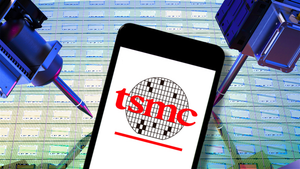
Nvidia Corporation (NASDAQ: NVDA), the undisputed leader in artificial intelligence (AI) chip manufacturing, recently delivered a mixed bag with its second-quarter fiscal 2025 earnings report. While the company impressively surpassed overall revenue and profit expectations, a critical miss in its pivotal data center segment—the engine driving the current AI revolution—sent a tremor through the market, causing its stock to dip. This surprising turn of events has ignited a crucial debate among investors and analysts: is the seemingly unstoppable AI growth narrative beginning to show cracks, or is this merely a transient setback for a high-flying tech giant?
The earnings report, despite its headline-grabbing beat on the top and bottom lines, underscored the immense, perhaps unsustainable, expectations placed on Nvidia. The slight stumble in data center growth, attributed partly to ongoing U.S. export restrictions affecting China sales and a natural deceleration from hyper-growth, has prompted a re-evaluation of the broader AI sector's trajectory and the sustainability of its rapid expansion.
What Happened and Why It Matters
Nvidia's Q2 2025 financial disclosures revealed a company firing on most cylinders but facing headwinds in its most crucial division. The Santa Clara-based chipmaker reported a record $46.7 billion in revenue, comfortably exceeding analyst consensus which had hovered around $46.05 billion to $46.52 billion. Adjusted earnings per share (EPS) also impressed, reaching $1.04 or $1.05 against predictions of $1.01 or $1.02. Net income soared by a remarkable 59% to $26.4 billion, with robust gross margins holding steady above 72%. These figures ordinarily would spark a celebratory rally, yet the market's reaction was decidedly muted, even negative.
The devil, as it often is, was in the details—specifically, the data center segment. This division, which has been the primary beneficiary of the generative AI boom, posted a record $41.1 billion in revenue, marking a substantial 56% year-over-year increase. However, this figure fell just shy of the most optimistic analyst estimates, which had reached as high as $41.34 billion. More concerning for some was the deceleration of sequential growth, with data center revenue expanding by only 5% quarter-over-quarter. This marked the first time since the AI surge began that this critical segment experienced single-digit sequential growth, raising questions about the pace of future expansion.
The immediate aftermath saw Nvidia's (NASDAQ: NVDA) stock price dip between 2.5% and 4% in after-hours trading, with further declines the following day. This cautious investor response highlights the extraordinary expectations that have been baked into Nvidia's valuation, especially given its stock's astronomical performance—up 35% year-to-date and nearly tripling in 2024 prior to the report. Key factors cited for the data center miss included the impact of ongoing U.S. export restrictions on H20 chip sales to China, with the company confirming no such sales in Q2 due to regulatory hurdles. CFO Collette Kress indicated that while approval for H20 sales was received late in July, shipments to China had not yet commenced and the Q3 forecast also prudently excluded any China H20 shipments due to persistent regulatory uncertainty. This geopolitical complexity, coupled with the sheer loftiness of investor expectations, underscores the delicate balance Nvidia must maintain as it navigates both technological innovation and a complex global trade environment.
Shifting Tides: Who Wins and Who Loses in the AI Re-evaluation
Nvidia's slight stumble, while concerning for its immediate stock performance, has created a dynamic shift in the competitive landscape, potentially paving the way for both new winners and clearer losers in the burgeoning AI market. The market's re-evaluation of AI growth rates is prompting a more discerning look at the underlying fundamentals and diversification strategies of companies throughout the AI supply chain.
Among the immediate beneficiaries are Nvidia’s direct competitors, particularly Advanced Micro Devices (NASDAQ: AMD) and Intel (NASDAQ: INTC). AMD is aggressively positioning its Instinct GPU lineup (MI300X, MI325X, MI350 Series, MI400 Series) as a compelling alternative, emphasizing competitive pricing and its open-source ROCm ecosystem to challenge Nvidia's proprietary CUDA platform. This strategy appeals to hyperscalers eager to diversify their suppliers and avoid vendor lock-in. Intel, too, is making strategic inroads, focusing on edge AI, agentic AI, and specialized hardware. Its Gaudi 3 AI chip, positioned as a more affordable alternative to Nvidia’s H100, aims at cost-conscious enterprises for mid-market AI deployments. More importantly, Intel’s Xeon 6 processors are optimized for AI workloads, showcasing a full-stack AI solution that could capture significant market share.
Cloud Service Providers (CSPs) are also poised to benefit from this recalibration. Giants like Microsoft (NASDAQ: MSFT), with its Azure platform and deep partnership with OpenAI, Google (NASDAQ: GOOGL), leveraging its Vertex AI and proprietary TPUs, and Amazon (NASDAQ: AMZN), through AWS, have been heavily investing in their own custom AI silicon and diversifying their hardware procurement. Nvidia's data center miss reinforces their motivation to reduce dependence on any single supplier, accelerate internal chip development, and offer end-to-end AI solutions that are less susceptible to external supply chain fluctuations or pricing pressures. Their robust internal AI infrastructure and diversified offerings allow them greater control over costs and innovation.
Conversely, Nvidia itself faces short-term pressures. The sharp investor reaction to a minor miss highlights the incredibly high bar set for the company. Furthermore, the persistent uncertainty surrounding U.S. export restrictions on H20 chips to China remains a significant overhang, potentially impacting billions in revenue and encouraging China to accelerate its push for domestically sourced chips. Beyond Nvidia, pure-play AI infrastructure providers heavily reliant on Nvidia’s GPUs, such as CoreWeave, face increased scrutiny. CoreWeave, for instance, saw its stock dip despite revenue growth, struggling with reported losses, substantial debt, and contracting operating margins, exposing the precarious balance between growth and profitability for firms dependent on acquiring expensive Nvidia hardware. The market may also become less tolerant of smaller AI startups or companies with inflated valuations based on speculative future AI potential rather than demonstrated profitability and sustainable business models.
Industry Tremors: Broader Implications for the AI Landscape
Nvidia’s Q2 2025 earnings report, particularly the nuanced performance of its data center segment, resonates far beyond the company’s immediate financials, sending significant ripple effects across the entire AI industry. It underscores several evolving trends and amplifies existing concerns, prompting a wider reassessment of the AI revolution’s trajectory.
The event highlights the relentless and growing demand for AI infrastructure, but also the increasing complexity and diversification within it. While hyperscale cloud providers like Microsoft (NASDAQ: MSFT), Meta Platforms (NASDAQ: META), Amazon (NASDAQ: AMZN), and Alphabet (NASDAQ: GOOGL) continue their heavy spending on AI, Nvidia’s data center miss further validates their strategic pivot towards developing custom AI silicon (ASICs). This trend towards vertical integration is a direct response to the need for specialized hardware, cost optimization, and supply chain resilience. Moreover, the industry is witnessing a rise in "agentic AI" systems capable of autonomous workflow management, driving demand for increasingly powerful and specialized AI chips beyond just raw processing power. The mainstreaming of AI-powered PCs, projected to surpass 100 million shipments in 2025, also signals a broadening of AI applications from cloud to edge.
The competitive landscape is heating up significantly. While Nvidia (NASDAQ: NVDA) still commands an estimated 90% of the data center GPU market, its recent performance provides fertile ground for competitors. Advanced Micro Devices (NASDAQ: AMD), with its aggressive Instinct GPU roadmap and open-source ROCm ecosystem, is actively seeking to win over hyperscalers looking to diversify. Even Intel (NASDAQ: INTC), despite facing its own challenges, is finding niches with its Gaudi 3 AI chip as a more affordable alternative. The sector-wide sell-off that dragged down shares of both AMD and Intel following Nvidia's news illustrates the interconnectedness of the market and how investor sentiment towards the dominant player can influence the entire ecosystem. Cloud providers, as major customers, are also becoming significant competitors through their internal chip development, subtly shifting power dynamics within the industry.
Investor sentiment, while still broadly optimistic, is becoming more nuanced and cautious. The "AI hype cycle" is being subjected to greater scrutiny, with capital increasingly flowing into high-growth, utility-driven AI assets that demonstrate clear returns on investment, rather than purely speculative ventures. While venture capital funding for AI remains robust, there's a preference for infrastructure over novelty, favoring vertical Large Language Models (LLMs), regulatory-compliant AI, and edge processing solutions. This heightened discernment reflects a market maturing beyond initial exuberance, demanding clearer pathways to profitability and sustainable growth. However, concerns about market concentration persist, with the immense capitalization of AI-driven mega-caps like Nvidia and Microsoft raising questions about monopolistic practices and the potential for algorithmic collusion.
From a regulatory and policy standpoint, Nvidia's situation underscores the critical role of government intervention. The U.S. government's stringent export controls on advanced AI chips, particularly impacting sales to China, are a double-edged sword: vital for national security but also a potential drag on corporate revenues and global innovation. This policy direction, exemplified by the CHIPS and Science Act, aims to bolster domestic manufacturing and research, reducing reliance on concentrated supply chains. Regulators, including the FTC and DOJ, are also intensifying antitrust scrutiny of the AI sector, mirroring historical precedents where dominant tech players faced intervention. This regulatory environment is pushing companies to navigate a complex geopolitical landscape while simultaneously driving innovation and fostering competition.
The Road Ahead: Navigating AI's Evolving Frontier
Nvidia’s Q2 2025 earnings report serves not as a definitive end-point, but rather a crucial inflection point, setting the stage for a dynamic evolution in both the company's trajectory and the broader AI market. In the short term, the insatiable demand for AI infrastructure is expected to persist, driven by leading US cloud customers and sovereign governments. Nvidia's Blackwell Ultra platform, which saw shipments of its GB300 AI cluster system commence in Q2, continues to be in high demand. However, the persistent shadow of China export restrictions looms large, with Nvidia’s Q3 guidance explicitly excluding any H20 chip sales to the region. This uncertainty will continue to fuel market volatility, especially as investors recalibrate their exceptionally high expectations for sustained hyper-growth. A significant short-term opportunity lies in AI inference – the act of deploying and running AI models – which is emerging as a larger immediate market than training, and where Nvidia is strategically positioning itself, even amidst growing competition.
Looking further ahead, the long-term prospects for AI infrastructure remain robust, with Nvidia projecting a global AI market growth at a 50% pace and cumulative data center spending reaching an astronomical $3 trillion to $4 trillion by the end of the decade. Nvidia is not resting on its laurels, with an aggressive product roadmap that includes the Rubin architecture slated for volume production in 2026, Rubin Ultra GPUs in 2027, and the Feynman architecture planned for 2028. This relentless innovation, coupled with its formidable CUDA ecosystem (reportedly used by 90% of AI developers), aims to maintain its technological leadership and ecosystem lock-in. Furthermore, the company is actively diversifying its customer base beyond hyperscalers, expanding into high-growth sectors such as healthcare, automotive, and robotics, and forging deals in emerging geographical markets like Latin America, Europe, and the Middle East.
To navigate this evolving landscape, Nvidia will require strategic pivots and adaptations. Geopolitical complexities necessitate developing compliant, perhaps less powerful, chips for markets like China (e.g., the B30A, a China-specific Blackwell variant) while aggressively growing in unrestricted regions. A stronger emphasis on AI software and services, such as NVIDIA AI Enterprise and Omniverse, will be crucial to further solidify its ecosystem and create greater switching costs for customers. Customer concentration risk also mandates broadening its clientele beyond a handful of hyperscalers. More importantly, investing in supply chain resilience, given its reliance on outsourced production, notably from Taiwan Semiconductor Manufacturing Co. (TPE: 2330), is a necessary adaptation to mitigate future risks.
Emerging market opportunities are abundant, including the rise of "Sovereign AI" where governments invest heavily in national AI capabilities, the cross-industry adoption of AI across manufacturing and healthcare, and the burgeoning field of physical AI and robotics. However, challenges are equally significant: intensifying competition from Advanced Micro Devices (NASDAQ: AMD), Intel (NASDAQ: INTC), and in-house hyperscaler chips threatens market share and margins. Regulatory scrutiny over market concentration and geopolitical tensions will persist, potentially impacting global strategies. Concerns about an "AI spending bubble" could lead to market corrections if investment outpaces tangible returns, and the immense energy and cooling demands of advanced AI data centers pose a substantial infrastructure hurdle. The future will likely see scenarios ranging from Nvidia’s continued dominance and hyper-growth, to a “soft landing” where growth normalizes amidst increasing competition, or even geopolitical fragmentation leading to localized AI ecosystems. The company’s adaptability will be key to determining which of these outcomes prevails.
A Nuanced Outlook for the AI Powerhouse
Nvidia’s Q2 2025 earnings report, though presenting a formidable array of record-breaking financial metrics, served as a potent reminder of the stratospheric expectations placed upon the company, and by extension, the entire AI sector. While Nvidia (NASDAQ: NVDA) delivered an impressive $46.7 billion in revenue, handily beating estimates, and robust adjusted earnings per share of $1.05, the market’s initial lukewarm reaction underscored a subtle yet significant shift in investor sentiment. The slight miss in its crucial data center segment—which, despite reaching a record $41.1 billion and accounting for 88% of total sales, fell just short of the highest analyst forecasts—revealed that even the slightest deviation from perfection can trigger caution in a stock already "priced to perfection."
The key takeaways from this report are multifaceted: Nvidia's continued dominance as the foundational technology provider for the AI revolution is undeniable, driven by the strong adoption of its Blackwell platform and impressive financial performance across the board. Its high gross margins reflect both innovation and pricing power. However, the shadow of China export restrictions and the absence of H20 chip sales to the region represent a tangible headwind and a source of ongoing uncertainty. This confluence of factors paints a picture of a market still deeply bullish on AI, but one that is simultaneously becoming more discerning, scrutinizing hyper-growth narratives with a more critical eye.
Moving forward, the AI market will continue its relentless expansion, with CEO Jensen Huang's declaration that "the AI race is on" resonating loudly. The sustained, even increasing, capital expenditure from major cloud providers signals that AI has indeed reached a "tipping point" for enterprises, with Nvidia’s chips remaining the solution of choice for the most demanding workloads. Nvidia's optimistic Q3 revenue guidance of $54 billion, explicitly excluding China sales, further reinforces this underlying demand. The lasting impact of Nvidia's performance lies in its role as the central nervous system of global AI development, enabling unprecedented technological advancement across industries. Its projected capture of a substantial share of the estimated $3 trillion to $4 trillion in AI infrastructure spending by 2030 cements its long-term significance. Yet, the challenge of sustaining this hyper-growth amidst escalating competition and geopolitical complexities will define its future.
For investors, vigilance is paramount in the coming months. Closely monitoring developments in U.S.-China policy regarding H20 chip sales could unlock significant upside not yet factored into current forecasts. Tracking the capital expenditure patterns of major cloud providers, the adoption rates of Nvidia's Blackwell platform, and any shifts in gross margins will provide crucial insights into the company's trajectory. Furthermore, keeping a keen eye on Nvidia’s relentless innovation pipeline (e.g., the Rubin and Feynman architectures) and the competitive landscape will be essential. While the AI revolution continues apace, Nvidia's journey, though still leading the pack, is entering a phase of greater scrutiny and strategic adaptation, demanding a nuanced perspective from all market participants.





